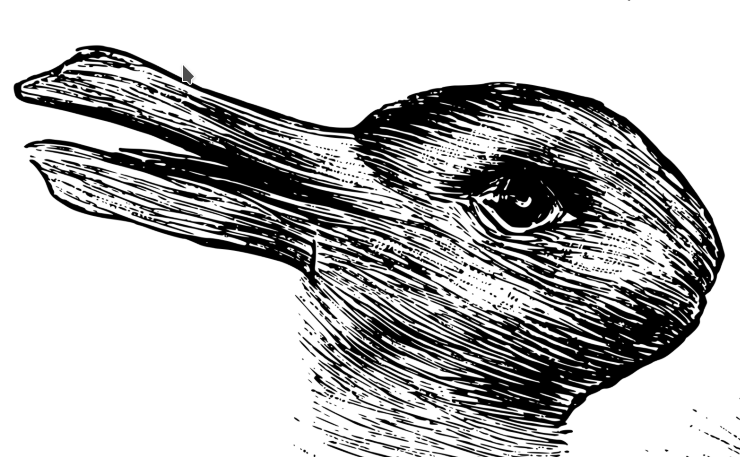Mary Douglas 2: a negative gist
I decided to start here with saying what Mary Douglas’ framework is not, i.e. write a negative gist. There is a helpful page 212 which lists the misunderstandings in Perri 6 and Paul Richards’ 2017 intellectual biography Mary Douglas: Understanding Social Thought and Conflict.

This is 4 pages from the end of the book, and is a reminder of what they have covered in tracing Douglas’ development away from the ‘dead-end’ (page 46) of structural-functionalism in anthropology, as formulated by Radcliffe-Brown or, say, Talcott Parsons. That society is a thing in itself and it is a body with organs. That we are homunculi in the society-man’s body. Some of us get to be in the head. It’s homunculi all the way down.

It’s a case where the old illustration of blind men feeling an elephant and defining an elephant by what they have each felt, but where the blindness itself is caused by the ability to see clearly. Not only is it a point-of-view (POV) where a strength is the weakness, but the strength is held up as an exemplar: as in the ‘clarity’ of insight. The POV is always with us, bias is a confounding strength, it is thus a weakness. It is POV all the way down. Or, at least, it is a POV that provides us with all our hardest problems in the softest or hardest inquiries we call science.
However even these peeps reaching out to these invisible elephants in the room are at least engaged in an inquiry, an effort, a labour: a worlding of sorts, if not types.
Now, an aside. This structural-functionalism differs from structuralism of Claude Levi-Strauss in which the structure to be investigated is a model used by members of society to form it and themselves.
At this point I usually talk about type-1 and type-2 structuralisms. In type-1 there is a underlying (if unconscious) chassis which in structural-functionalism it is the work of anthropologists to clearly delineate the organs of different bodies (societies).
By comparison, with Levi-Strauss, it is to clearly see how the models compose themselves (as type-1 structures perhaps) possibly within an over arching meta-model about models found in different societies’ models (society as a model of itself). It is a structuralism because of what it ostensibly studies, not because of a structural methodology as in the case of Radcliffe-Brown. Levi-Strauss’ binaries are an example (felt to be parsimonious in explanation) of a meta-model in myth.
Thus anthropology can be a type of Gnosticism in its enlightened view over its subject matter, especially when dealing with primitives.
A type-2 structuralism is a relational meta-model, rather than a ladder-like chassis, wherein it is the relations between parts allow differentiation and roles and the emergence of the thing that is society. This is on the model of language as linguistically described, like the way vowels move around the mouths of speakers depending on where each vowel is emphasized in the airflow. The neutral point or frame of reference for these sounds, the schwa, is technically described as the middle or center. but it moves around in different languages and dialects so sounds different between speakers, but performs a similar function.
Post-structuralist thought re-intensifies this notice (models as models of themselves) and applies it to the mouth parts as well as the airflow, and so fleas have littler fleas upon their back to bite’em, and so ad infinitum. Deconstruction reduces all that anatomy and even the living processes (interrupted and modulated airflow of models of themselves) into the less-than the atomized bits/organs/models/vowels/splitters/meanings/truths in their isolation, a position sometimes confused with nihilism, but which can be useful to clearly see the mess that the search for clarity can end up in. At which point I recommend the blur rather than clarity to regain insight.
Mary Douglas does not go down any of those paths, at least not like that.
So what is Mary Douglas’ work described positively? Well, apparently Mary Douglas wrote her books in the wrong order while searching for the right audience, so the aforementioned intellectual biography is very helpful start.
At the moment on my finishing the book, I feel it is necker cubes all the way down. Babushka dolls all the way out.
Or, a feedback flow not as a cybernetic cycle, but a movement best imagined as the path the earth takes through space in orbit around the sun as the sun moves around the galactic center as the galaxy retreats from all the galaxies outside the local supercluster. And that is the simple version without mentioning schwa-like barycenters all the way down an epicyclic complexity and how to test dark matter models. Depends on which frame of reference you choose, like I’ve said before it’s POV all the way down. If that is hard to visualise because POV or frames-of-reference confusion, then yeah, maybe clarity is not what we need in seeing our place in the world.

See also How, exactly, does planet Earth move through the Universe? by Matt Segal.
Part 3 will look at a more positively descriptions of Mary Douglas work. All these are listed on linkpost page. This post is also on substack you can leave comments there, though the self-hosted version will be more up to date.
